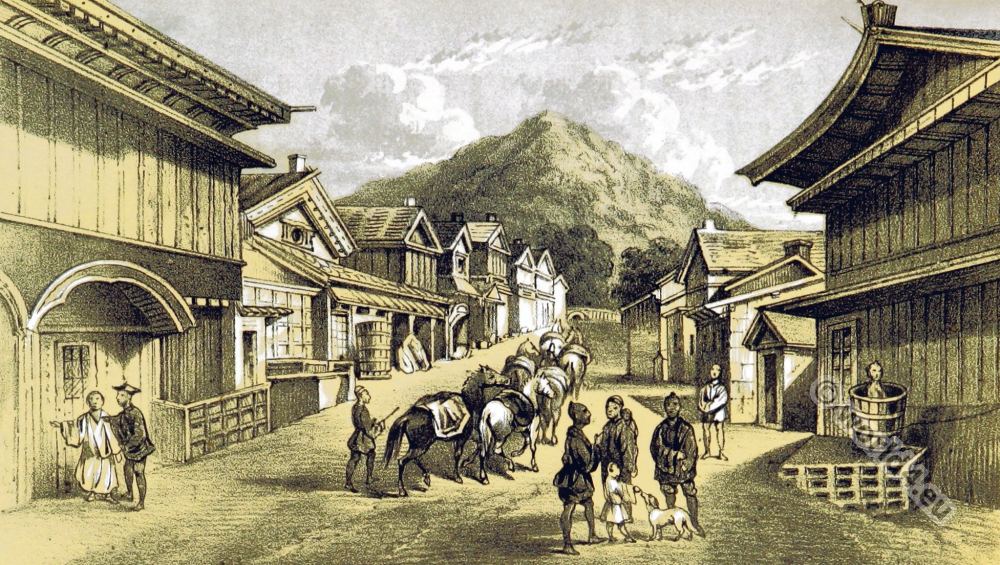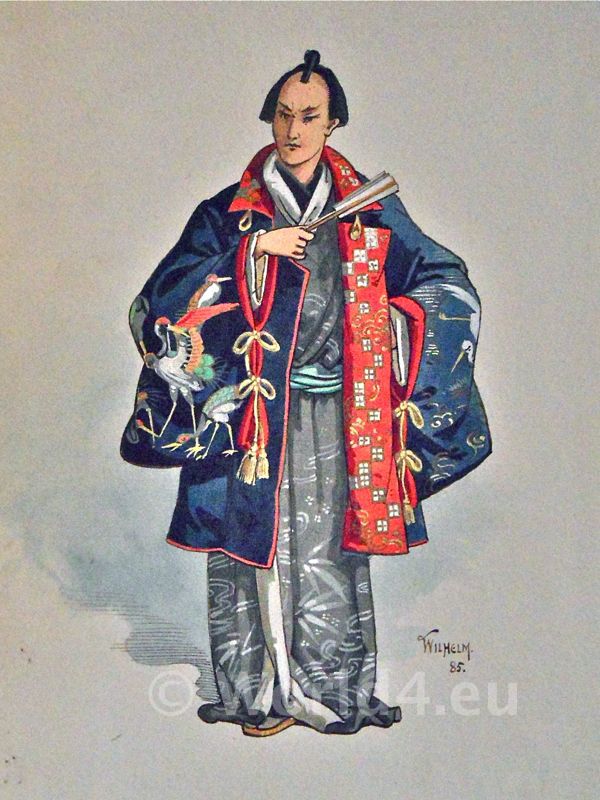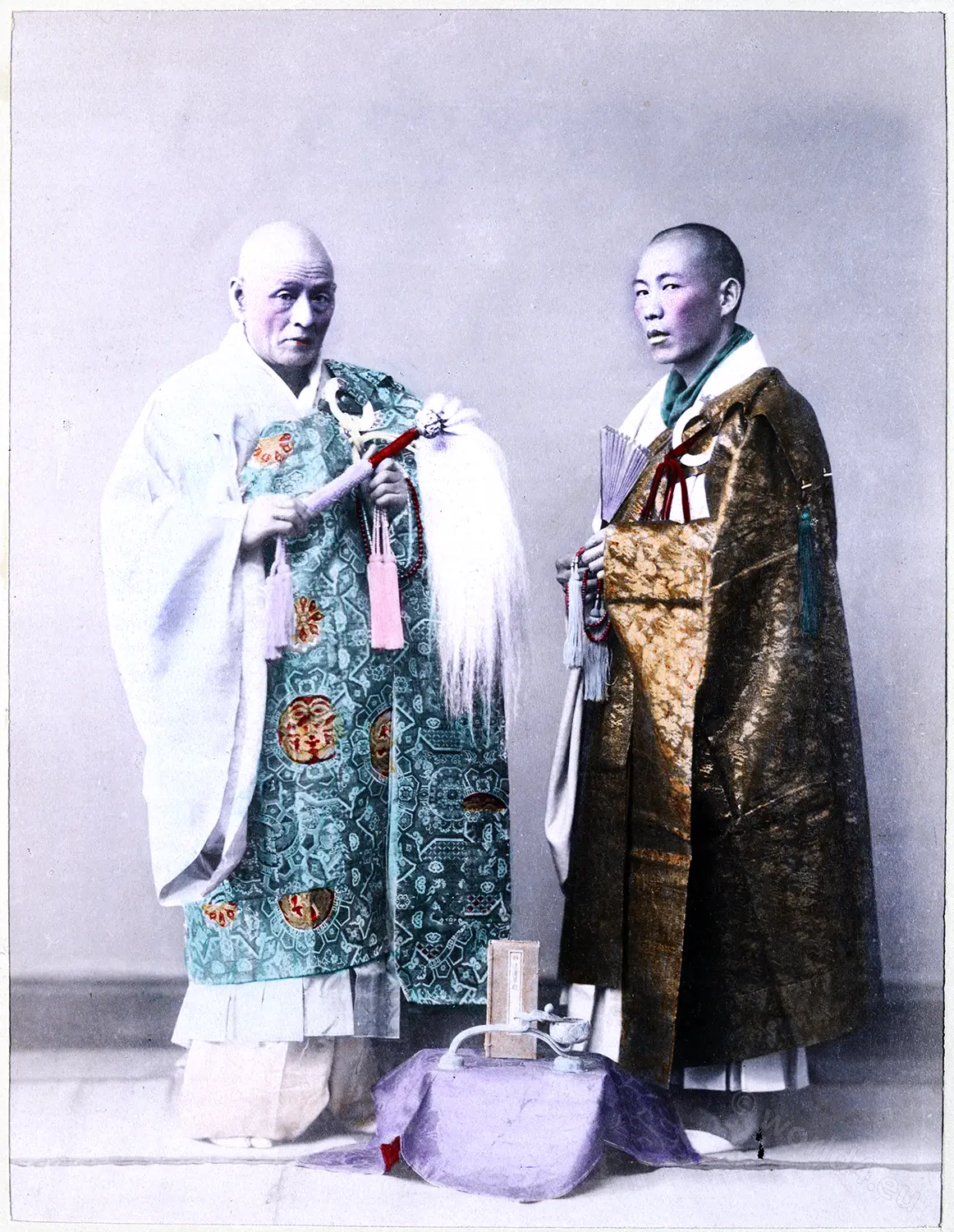Hanabusa Itchō (1652 – 1724, Japanese 英 一蝶, actually Taga Isaburō (多賀 猪三郎).
Hanabusa Itchō was a Japanese painter and artist of the middle Edo period (Genroku period). His real family name was Fujiwara, Taga, and his real name was Yasuo (安雄?Yasukatsu?) and later Nobuka. His family name was Kunju. His childhood names were Inosaburau, Jiemon and Sukenoshin (or Sukenojo). After shaving his head, he took the name Taga Choko. His haiku names were Gyo-un, Kyoun-dou and Seiryo.
One of the Four Refined Amusements.
A PAINTING BY ITCHO. 1652-1724.
by Okakura Kakzo
The genius of Tanniu, which astonished the Tokugawa world by its brilliancy, was chiefly instrumental in consolidating the great power and popularity of the Kano school of painting. During his life and for years after, there were but a few artists who could quiet free themselves from the magic influence of Tanniu, or of the school of which he was so able an exponent.
Itcho, who had a genius of his own too great to be controlled by the rules or precedents of the Kano or any other established school, nevertheless succeeded in opening up a new path in his art, and leaving to posterity a name no less illustrious than that of Tanniu. Trying at first to achieve success in the Kano school, he soon discovered the impossibility of doing himself full justice there, and sought a new road to artistic eminence.
This spirit of independence can be easily traced through all his works. His mind ever worked on the new and progressive side, and his style, characterised by light, graceful touches and great originality, is admirably illustrated in his excellent and inimitable portraiture of the manners and customs of his own time. Although his style might be criticised as lacking the mildness and gravity of some other able artists (for it possesses a certain overruling quality), this might fairly be excused as a natural outcome of the time in which he lived.
The only painter who could equally share fame and popularity with Itcho was Korin, a master well known for his beautiful and fanciful style of painting. Itcho willingly threw himself into the society of Kikaku and Ransetsu, both celebrated poets of his time, and he also freely partook of the pleasures of a gay and fashionable life, of which he transmitted to us most charming and faithful representations in a light humorous vein that filled the minds of his contemporaries with admiration. It is no wonder that an artist of his fearless disposition should leave behind him many works thoroughly imbued with a rare and noble spirit of independence.
Itcho was born in the family of a physician in the service of a feudal lord at Osaka in the First Year of Sho-o (A. D. 1652). At the age of fifteen he came to Tokyo and put himself in the school of Kano Yasunobu. The publication by him at one time of certain popular cartoons supposed to cast certain disrespectful reflections upon the private affairs of the ruling Shogun, *) was the occasion of his banishment for twelve years to the distant island of Miyake-jima. The works he produced during his exile are much sought after by all collectors and lovers of art.
*) He had made jokes about a favoured concubine of the Shōgun.
One morning, while engaged in drawing a butterfly, he received the welcome tidings of his release from the island, and he at once adopted the name “Itcho” (a butterfly) in grateful remembrance of this happy incident. He returned to his beloved Yedo and settled in Sen-unji, a religious establishment at Fukagawa, but which, on account of the splendid decoration he bestowed upon the different portions of the building, was afterward popularly known as Itchoji. He died in the Ninth Year of Kiyoho (A. D. 1724), and is buried upon the premises of the Shokyoji Temple in Tokei.
The accompanying plate illustrates in part the work upon a pair of folding screens by Itcho, being a fanciful rendering of Painting, one of the Four Refined Amusements. The paintings on this and its companion screens are among the most carefully finished works of Itcho, executed after his return from exile, and serve to show his rare artistic skill and delightful vein of humor, besides portraying in a most admirable manner the quaint historical atmosphere of the old Genroku Period.
The amount of care and attention bestowed by Itcho upon these paintings indicates the great zeal with which this artist worked in the interest of Yedo Painting, a branch of Japanese decorative art further developed at the able hands of the Miyakawa, Katsukawa, Torii and Okumura artists, and which, though it was partly the result of a natural artistic tendency of the age, still owes its origin and future prosperity in large measure to the impulse first given to the movement by the genius and foresight of this artist.
Source: JAPAN. Described and Illustrated by the Japanese. Written by Eminent Japanese Authorities and Scholars. Edited by Captain F Brinkley (1841 – 1912) of Tokyo Japan. With an Essay on Japanese Art by Kakuzo Okakura (1860 – 1929) Director of the Imperial Art School at Tokyo Japan. 1897.








